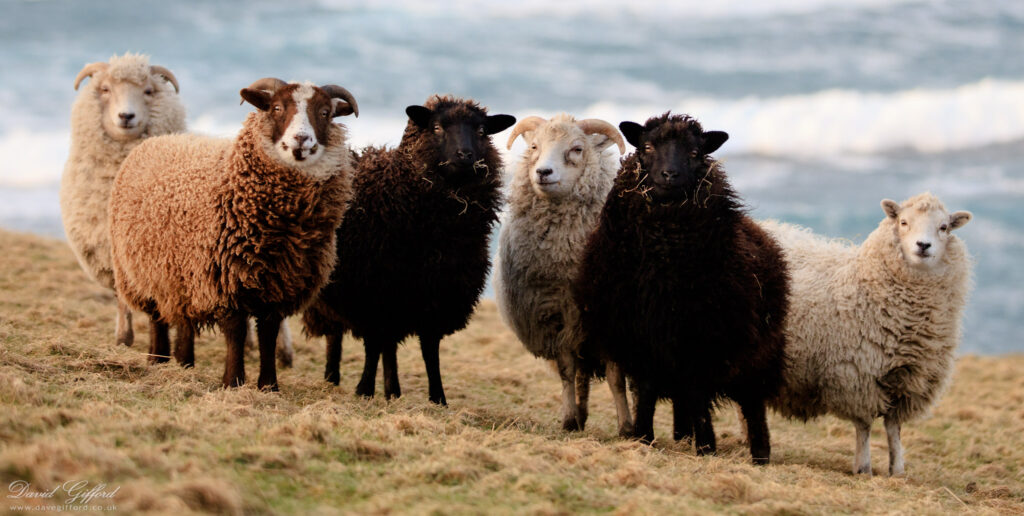
Sheep, one of the oldest domesticated animals, have been bred for various purposes across different regions and cultures worldwide. From providing wool for textiles to yielding meat and milk, sheep have played a significant role in agriculture and human livelihoods for thousands of years. One of the remarkable aspects of these animals is the incredible diversity of breeds, each with its own unique set of characteristics and adaptations. In this guide, we delve into the fascinating world of sheep breeds, exploring the traits that set them apart from one another.
Understanding Breed Classification:
Sheep breeds are classified based on their primary purpose, such as wool, meat, or dairy production. Additionally, some breeds are dual-purpose, meaning they are raised for both wool and meat. Understanding these classifications can help farmers and enthusiasts choose the most suitable breed for their specific needs.
Wool Breeds:
Wool breeds of sheep are renowned for the quality and diversity of their fleece, which is highly valued for its texture, length, and color. These breeds have been selectively bred over generations to produce wool that meets specific standards for various textile applications. Here are some notable wool breeds:

- Originating from Spain but now widely bred around the world, Merino sheep are celebrated for their exceptionally fine and soft wool.
- Merino wool is highly prized in the textile industry for its superior warmth, moisture-wicking properties, and softness against the skin.
- The wool fibers of Merino sheep are finely crimped, making them ideal for producing high-quality garments, including luxury clothing, blankets, and undergarments.

- The Romney breed, originating from England, is known for its long, lustrous fleece with well-defined crimp.
- Romney wool is prized for its strength, elasticity, and natural luster, making it suitable for a wide range of textile applications, including outerwear, upholstery, and carpets.
- The wool of Romney sheep is often used in blends to enhance the durability and resilience of other fibers.

- Developed in New Zealand by crossing Merino and Lincoln sheep, the Corriedale breed produces a versatile medium-grade wool.
- Corriedale wool is characterized by its softness, uniformity, and ease of spinning, making it suitable for a variety of knitting, weaving, and felting projects.
- This breed is popular among crafters and hobbyists for its ability to produce high-quality yarns and fabrics with good stitch definition and drape.
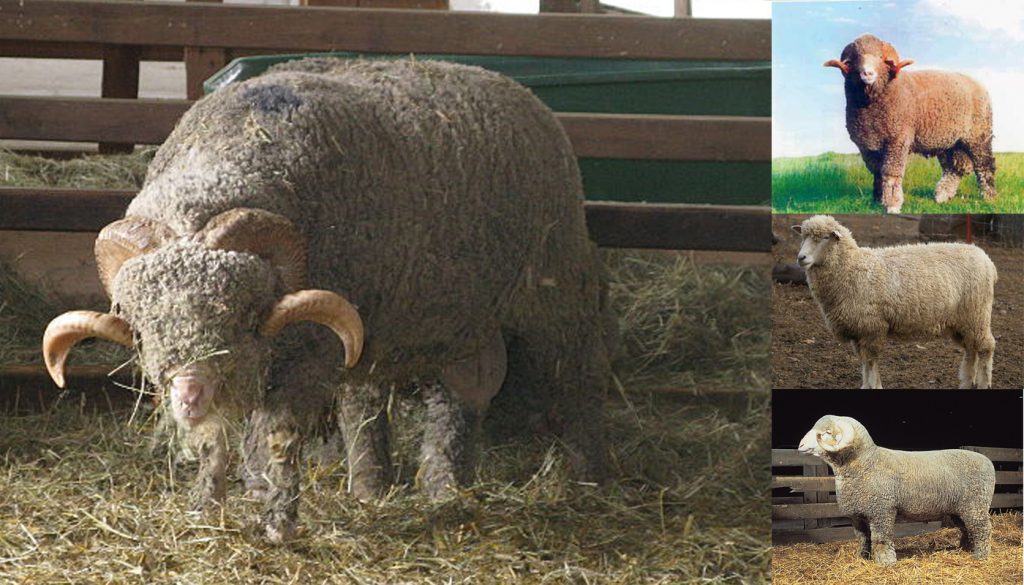
- The Rambouillet, originating from France but now widely raised in the United States, is valued for its fine, dense fleece with high crimp.
- Rambouillet wool is prized for its resilience, elasticity, and exceptional warmth, making it ideal for producing winter apparel and outdoor gear.
- This breed is often favored by commercial wool producers for its ability to produce high yields of premium-quality wool suitable for a range of industrial applications.

- Hailing from England, the Border Leicester breed is known for its long, curly fleece with a distinct luster.
- Border Leicester wool is prized by handspinners and artisans for its silky texture and excellent dye absorption, making it ideal for creating vibrant, luxurious yarns and fabrics.
- The wool of Border Leicester sheep is also valued in the production of specialty textiles, including lace, shawls, and decorative crafts.
These wool breeds represent just a few examples of the rich diversity found within the sheep industry. Each breed offers unique characteristics and qualities that contribute to the versatility and sustainability of wool production around the world. Whether it’s for high-end fashion, cozy blankets, or durable upholstery, wool from these breeds continues to be in demand for its unparalleled comfort, performance, and natural beauty.
Meat Breeds:
Meat breeds of sheep are selectively bred for their superior meat production characteristics, including muscularity, fast growth rates, and desirable meat-to-bone ratios. These breeds play a crucial role in meat production systems worldwide, providing flavorful and nutritious lamb and mutton for consumers. Here are some notable meat breeds:

- The Suffolk breed, originating from England, is one of the most popular meat breeds globally, prized for its muscular build and excellent meat quality.
- Easily recognizable by its distinctive black face and legs, Suffolk sheep are known for their fast growth rates and efficient feed conversion, making them economical for meat production.
- Suffolk lamb is highly regarded for its tender texture, succulent flavor, and well-marbled meat, making it a favorite among chefs and consumers alike.

- The Texel breed, originating from the Netherlands, is renowned for its high meat yield and exceptional meat-to-bone ratio.
- Texel sheep exhibit a robust, muscular build with well-developed loins and hindquarters, resulting in carcasses with a high proportion of lean meat.
- Texel lamb is prized for its tender texture, mild flavor, and minimal fat content, making it suitable for a wide range of culinary applications, from roasting and grilling to braising and stewing.

- The Hampshire breed, originating from England, is valued for its rapid growth rates, good muscle conformation, and flavorful meat.
- Hampshire sheep are known for their distinctive black face and legs, along with a deep, well-rounded body shape ideal for meat production.
- Hampshire lamb is favored by consumers for its tender texture, juicy flavor, and minimal external fat, making it a popular choice for gourmet cooking and traditional recipes.

- The Dorper breed, originating from South Africa, is renowned for its adaptability to various climates, high fertility rates, and superior meat quality.
- Dorper sheep feature a distinctive black head and white body, with a thick, meaty carcass and minimal wool cover, reducing the need for shearing.
- Dorper lamb is prized for its succulent texture, rich flavor, and excellent meat-to-bone ratio, making it well-suited for both domestic and export markets.
5. Katahdin:
- The Katahdin breed, developed in the United States, is prized for its adaptability to extensive grazing systems, maternal instincts, and flavorful meat.
- Katahdin sheep are hair sheep, meaning they shed their wool naturally, reducing the need for shearing and maintenance.
- Katahdin lamb is valued for its tender texture, sweet flavor, and consistent quality, making it a preferred choice for discerning consumers and specialty markets.
These meat breeds exemplify the diverse characteristics and qualities sought after in sheep bred for meat production. Whether it’s for succulent roasts, savory stews, or gourmet cuisine, the flavorful meat from these breeds continues to be in high demand among consumers seeking premium-quality lamb and mutton.
Dairy Breeds:
Dairy sheep breeds are selectively bred for their high milk production, which is rich in fat and protein, making it ideal for cheese, yogurt, and other dairy product production. These breeds play a crucial role in the dairy industry, providing valuable milk resources for artisanal and commercial dairy operations. Here are some notable dairy breeds:

- Originating from the Friesland region of Germany, the East Friesian breed is renowned for its exceptional milk production capabilities.
- East Friesian ewes are among the most prolific dairy sheep, producing large quantities of rich, high-fat milk with elevated levels of protein and solids.
- The milk from East Friesian sheep is prized for its suitability in cheese-making, particularly for hard and semi-hard cheeses, as well as for producing creamy yogurt and other dairy products.
2. Lacaune:

- The Lacaune breed, primarily found in the Midi-Pyrénées region of France, is highly esteemed for its rich, flavorful milk, ideal for cheese production.
- Lacaune sheep are known for their adaptability to various climates and environments, as well as their ability to produce milk with consistent quality throughout the lactation period.
- The milk from Lacaune sheep is prized for its high protein and fat content, making it particularly well-suited for producing renowned French cheeses such as Roquefort, as well as other specialty dairy products.

- The Awassi breed, originating from the Middle East, is valued for its adaptability to arid and semi-arid environments, as well as its high milk production.
- Awassi ewes are known for their resilience and ability to thrive in harsh conditions, producing milk with a rich, creamy texture and distinct flavor.
- The milk from Awassi sheep is used in traditional Middle Eastern dairy products such as labneh (strained yogurt) and cheese, as well as for modern dairy processing applications.
4. Sarda:
- The Sarda breed, native to the island of Sardinia in Italy, is prized for its robust constitution, high milk yield, and suitability for extensive grazing systems.
- Sarda sheep produce milk with a high fat and protein content, making it ideal for cheese production, including the renowned pecorino cheese varieties of Sardinia.
- The milk from Sarda sheep is also used in the production of ricotta cheese, yogurt, and other dairy products popular in Italian cuisine.
5. Assaf:

- The Assaf breed, developed in Israel by crossing Awassi and East Friesian sheep, combines the milk production capabilities of both parent breeds.
- Assaf ewes produce milk with high fat and protein content, well-suited for cheese-making and other dairy processing applications.
- The Assaf breed has gained popularity in dairy production systems worldwide for its adaptability, productivity, and quality of milk.
These dairy breeds exemplify the diverse characteristics and qualities sought after in sheep bred for milk production. Whether it’s for traditional cheese-making methods or modern dairy processing applications, the rich and flavorful milk from these breeds continues to be valued by dairy producers and consumers alike.
Dual-Purpose Breeds:
Dual-purpose sheep breeds are versatile breeds that are raised for both meat and wool production. These breeds offer a combination of traits that make them valuable assets to farmers, allowing for efficient utilization of resources and maximizing profitability. Here are some notable dual-purpose breeds:
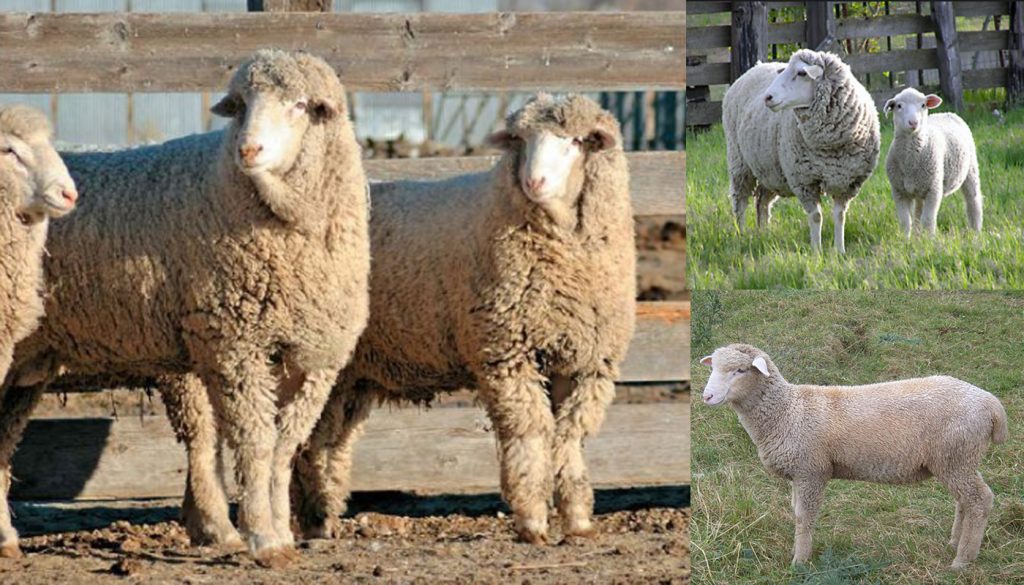
- The Columbia breed, developed in the United States, is renowned for its versatility and adaptability to various climates and management systems.
- Columbia sheep are prized for their medium-grade wool, which is soft and lustrous, suitable for a wide range of textile applications.
- In addition to their wool production, Columbia sheep are valued for their fast growth rates and high-quality meat, making them an ideal dual-purpose breed for both commercial and small-scale farming operations.

- The Polypay breed, developed in the United States, is known for its prolificacy, hardiness, and ability to thrive in diverse environments.
- Polypay sheep produce medium-grade wool with good staple length and crimp, suitable for spinning and weaving into a variety of textile products.
- As a dual-purpose breed, Polypay sheep are valued for their rapid growth rates, early maturity, and flavorful meat, making them well-suited for pasture-based production systems and niche markets.

- The Targhee breed, developed in the United States, is prized for its fine wool and excellent meat quality, making it a popular choice among sheep producers.
- Targhee sheep produce wool with a fine to medium grade, known for its elasticity, loft, and resilience, making it suitable for high-quality yarns and fabrics.
- In addition to their wool production, Targhee sheep are valued for their tender, flavorful meat, making them a preferred choice for both commercial and specialty meat markets.

- The Corriedale breed, developed in New Zealand by crossing Merino and Lincoln sheep, is valued for its dual-purpose capabilities and adaptability to various climates.
- Corriedale sheep produce a versatile medium-grade wool with good staple length and crimp, suitable for a wide range of textile applications, including knitting, weaving, and felting.
- In addition to their wool production, Corriedale sheep are prized for their fast growth rates, efficient feed conversion, and well-marbled meat, making them an economically viable option for integrated farming systems.

- The Dorset breed, originating from England, is known for its adaptability, hardiness, and excellent maternal instincts.
- Dorset sheep produce medium-grade wool with good crimp and staple length, suitable for spinning into yarns and fabrics with a soft, springy texture.
- As a dual-purpose breed, Dorset sheep are valued for their early maturity, high fertility rates, and flavorful meat, making them well-suited for pasture-based production systems and direct marketing opportunities.
Dual-purpose breeds offer farmers the flexibility to diversify their operations and meet the demands of both wool and meat markets. By selecting breeds with desirable traits for both purposes, farmers can optimize production efficiency and profitability while maintaining sustainable farming practices.
Regional and Heritage Breeds:
Regional and heritage sheep breeds are those that have evolved over centuries in specific geographical regions, often influenced by local climates, landscapes, and cultural traditions. These breeds possess unique characteristics and adaptations that reflect their historical context and the roles they have played in their native environments. Here are some examples of regional and heritage sheep breeds:

- Originating from the Shetland Islands of Scotland, the Shetland sheep is a small, hardy breed known for its ability to thrive in harsh and rugged environments.
- Shetland sheep produce fine to medium-grade wool in a variety of natural colors, prized by handspinners and artisans for its softness, warmth, and versatility.
- In addition to their wool production, Shetland sheep are valued for their flavorful meat and ability to graze on rough pasture, making them well-suited for extensive farming systems.

- The Navajo-Churro sheep, originally brought to North America by Spanish explorers in the 16th century, is a resilient and adaptable breed prized by Indigenous peoples for its wool and meat.
- Navajo-Churro sheep produce a coarse, long-staple wool in a variety of colors, known for its durability and resistance to harsh weather conditions.
- In addition to their wool production, Navajo-Churro sheep are valued for their lean, flavorful meat and play a significant role in the cultural and economic traditions of Native American communities in the Southwest United States.
3. Icelandic:

- Originating from Iceland, the Icelandic sheep is one of the world’s oldest and purest breeds, dating back to Viking settlements over a thousand years ago.
- Icelandic sheep are known for their dual-coated fleece, consisting of a soft, insulating inner layer (thel) and a coarse, weather-resistant outer layer (tog), which provide excellent protection against the cold and wet climate of Iceland.
- In addition to their wool production, Icelandic sheep are valued for their lean, tender meat and adaptability to extensive grazing systems, making them well-suited for sustainable farming practices.
4. Karakul:

- The Karakul sheep, native to Central Asia, is renowned for its distinctive fat-tailed appearance and ability to thrive in arid and desert environments.
- Karakul sheep produce a unique, tightly curled fleece known as “broadtail,” prized for its durability, sheen, and resistance to felting.
- In addition to their wool production, Karakul sheep are valued for their hardiness, high fertility rates, and adaptability to harsh climates, making them an important source of meat, milk, and fiber for nomadic and semi-nomadic pastoralist communities.

- Originating from the St. Kilda archipelago off the coast of Scotland, the Soay sheep is considered one of the most primitive and ancient breeds in the world.
- Soay sheep are small and agile, with a natural, self-shedding fleece that varies in color from light tan to dark brown.
- In addition to their wool production, Soay sheep are valued for their ability to graze on rough terrain and for their role in ecological conservation efforts, particularly on remote and isolated islands where they help maintain biodiversity and ecosystem balance.
These regional and heritage breeds represent just a few examples of the rich diversity found within the global sheep population. By preserving and promoting these breeds, we can safeguard genetic diversity, cultural heritage, and sustainable farming practices for future generations.
Conclusion:
The diversity of sheep breeds reflects the ingenuity and adaptability of humans in harnessing nature’s resources to meet various needs. Whether it’s for wool, meat, milk, or a combination of these, there’s a sheep breed suited to every purpose and environment. By understanding the distinguishing characteristics of different breeds, farmers and enthusiasts can make informed decisions to support sustainable agriculture and preserve the rich heritage of sheep farming.
 Dorset Horn Sheep Breed – Everything You Need to Know
Dorset Horn Sheep Breed – Everything You Need to Know Suffolk Sheep Breed – Everything You Need to Know
Suffolk Sheep Breed – Everything You Need to Know Welsh Mountain Sheep Breed – Everything You Need to Know
Welsh Mountain Sheep Breed – Everything You Need to Know American Tunis Sheep Breed – Everything You Need to Know
American Tunis Sheep Breed – Everything You Need to Know Southdown Sheep Breed – Everything You Need to Know
Southdown Sheep Breed – Everything You Need to Know Targhee Sheep Breed – Everything You Need to Know
Targhee Sheep Breed – Everything You Need to Know Lincoln Sheep Breed – Everything You Need to Know
Lincoln Sheep Breed – Everything You Need to Know Shetland Sheep Breed – Everything You Need to Know
Shetland Sheep Breed – Everything You Need to Know Romanov Sheep Breed – Everything You Need to Know
Romanov Sheep Breed – Everything You Need to Know Awassi Sheep Breed – Everything You Need to Know
Awassi Sheep Breed – Everything You Need to Know 10 Best Sheep Breeds for Milk
10 Best Sheep Breeds for Milk Navajo-Churro Sheep Breed – Everything You Need to Know
Navajo-Churro Sheep Breed – Everything You Need to Know